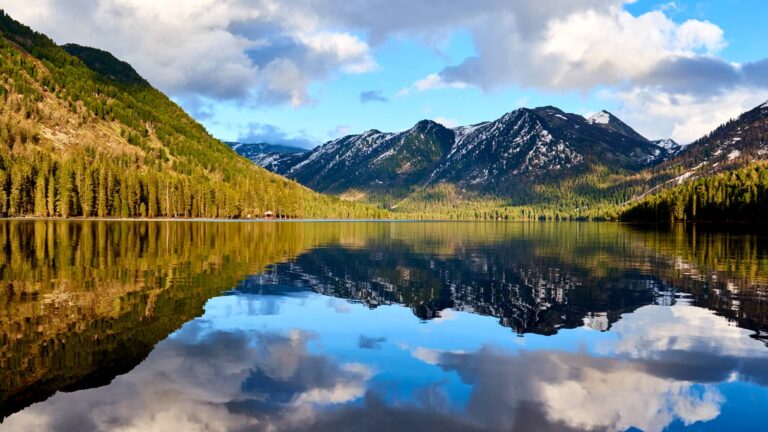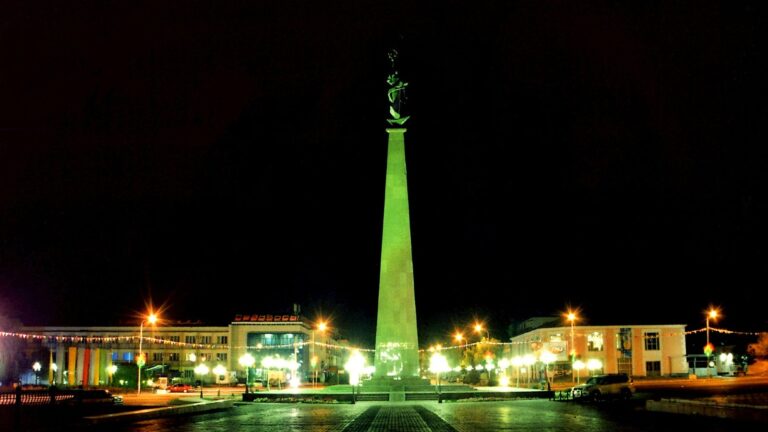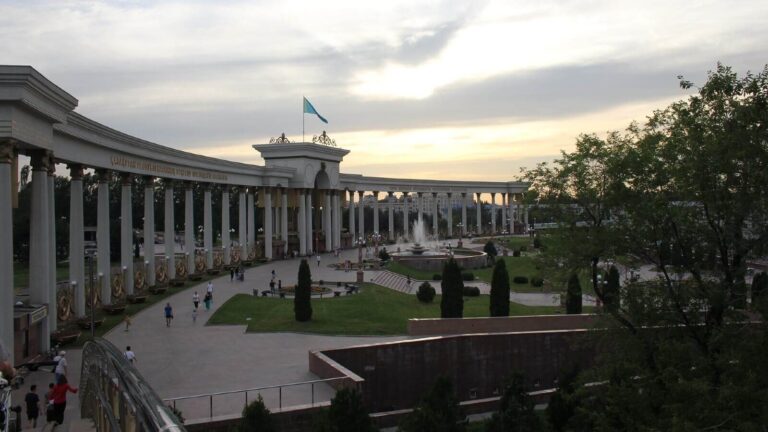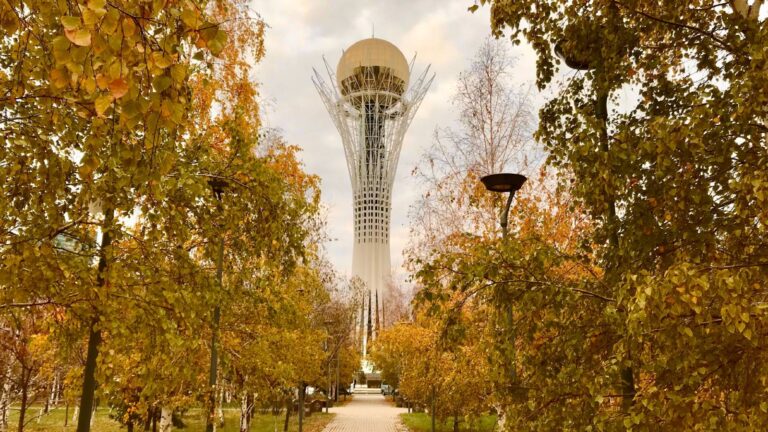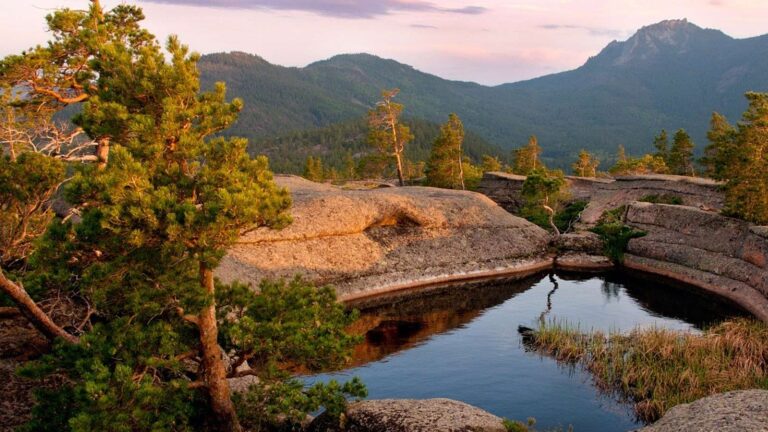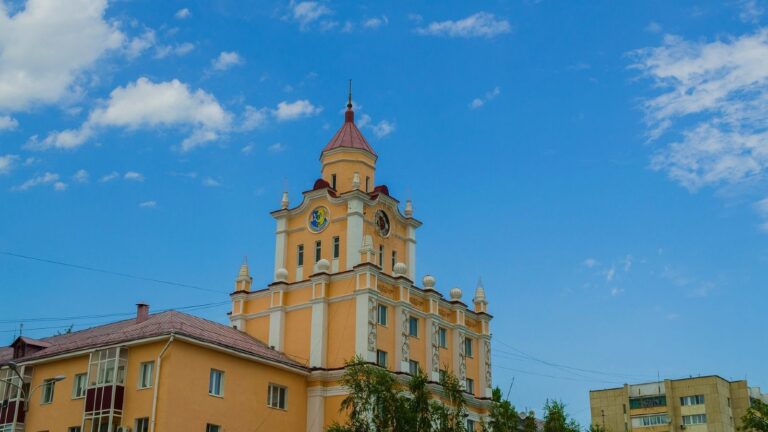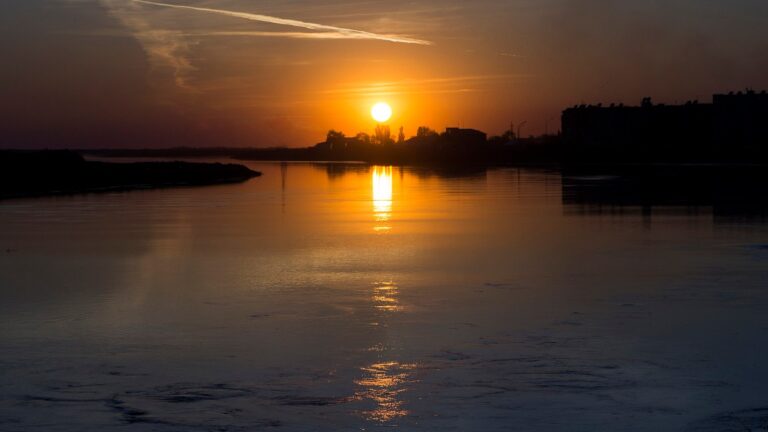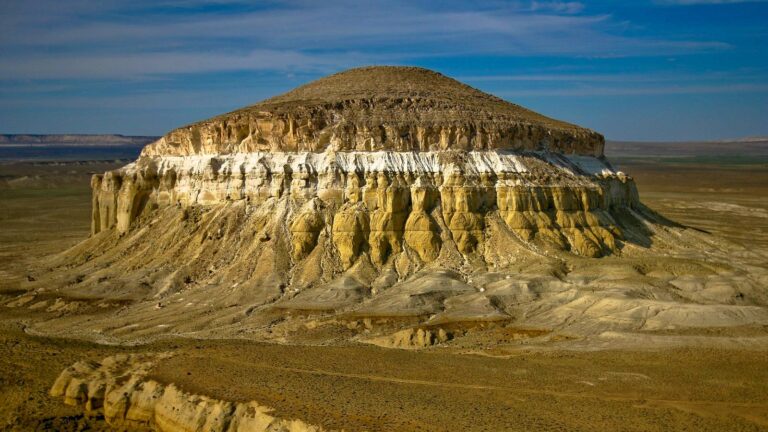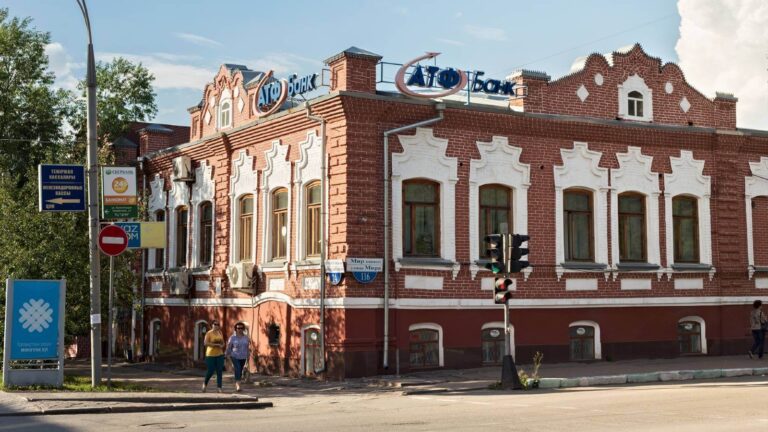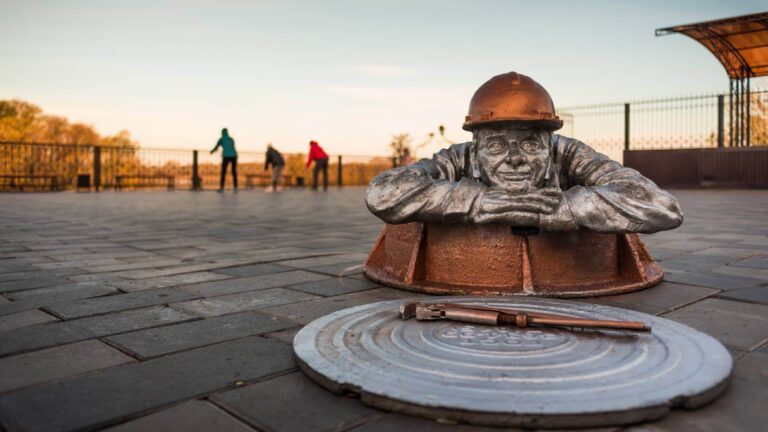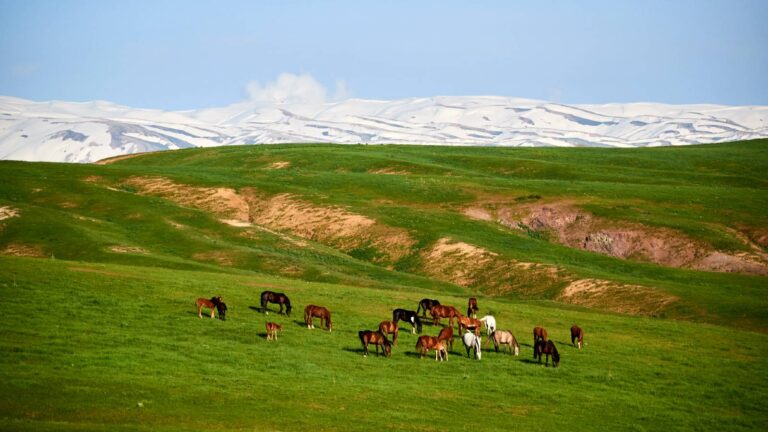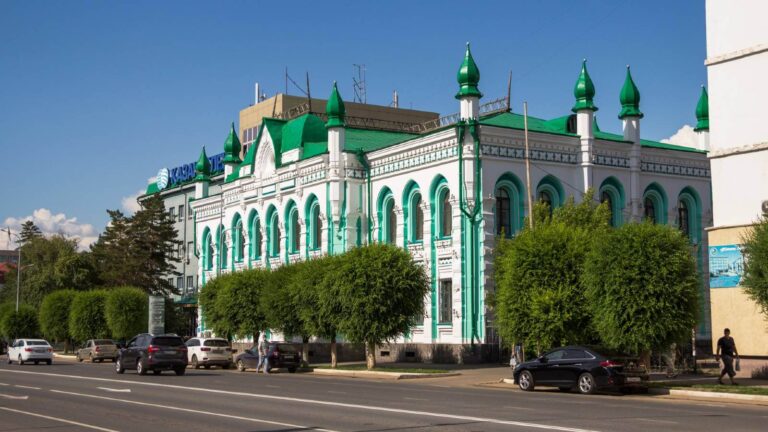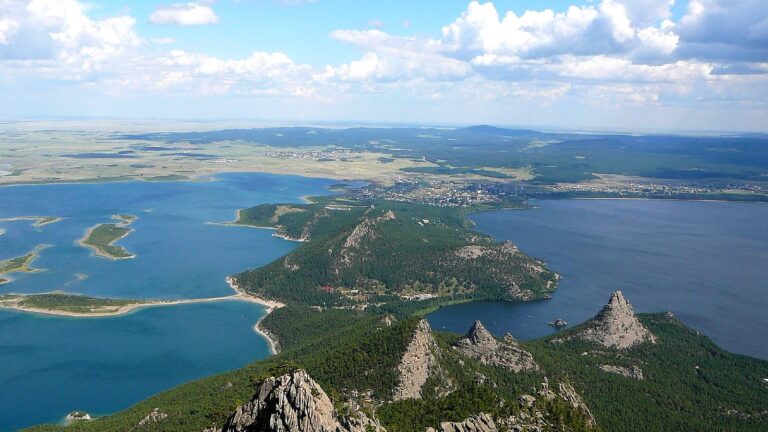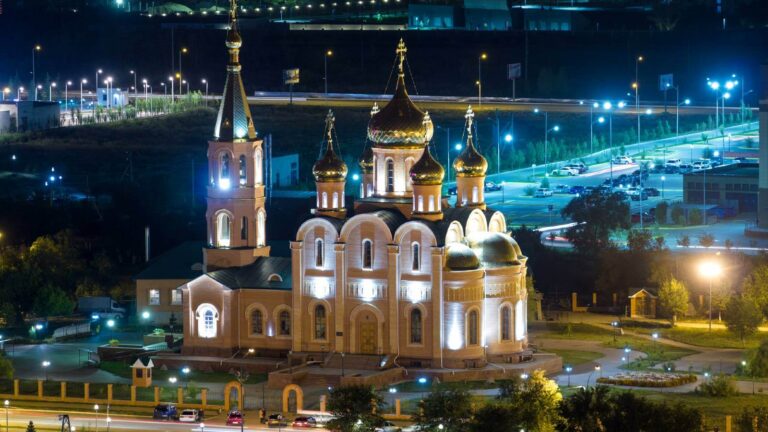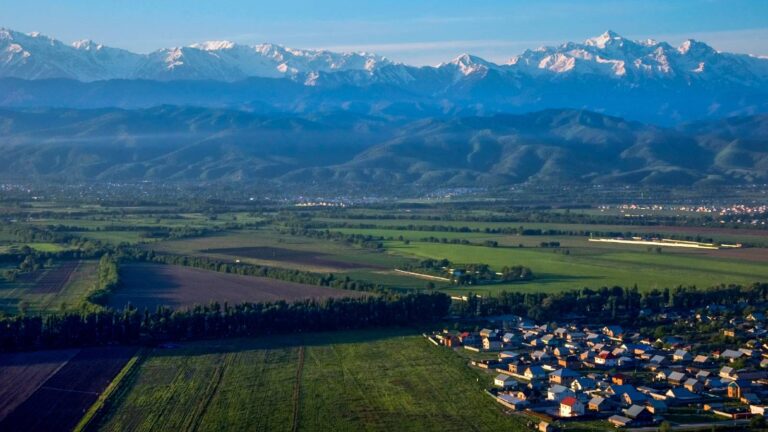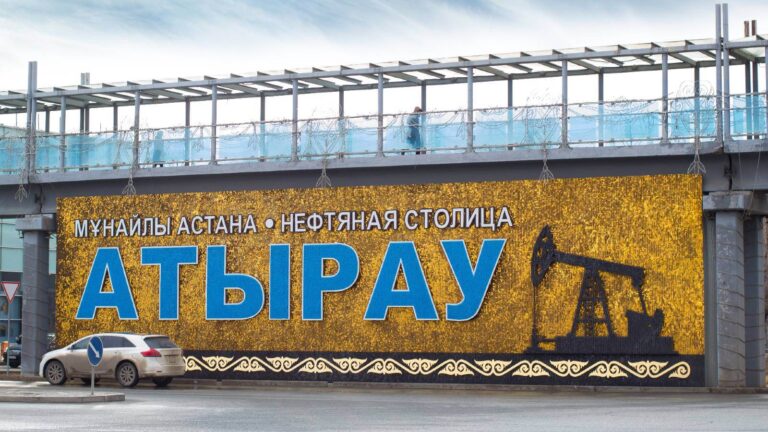Main image: Dmitry A. Mottl, CC BY-SA 3.0, via Wikimedia Commons
By plane: The region is served by Ust-Kamenogorsk Airport, with regular flights from major cities in Kazakhstan. It is the most convenient and time-efficient way to reach East Kazakhstan.
By train: The railway network provides train services to East Kazakhstan. Ust-Kamenogorsk has a train station with connections to major cities in Kazakhstan, making it a comfortable option for long-distance travel.
Ust-Kamenogorsk: Explore the capital city of East Kazakhstan, Ust-Kamenogorsk, and visit its landmarks such as the Central Mosque, Ascension Cathedral, and the National Museum.
Altai Mountains: Discover the natural beauty of the Altai Mountains. Go hiking or trekking in the stunning landscapes, visit the Katon-Karagay National Park, and enjoy breathtaking views of snow-capped peaks, deep valleys, and pristine lakes.
Lake Markakol: Visit Lake Markakol, one of the largest and most picturesque lakes in the region. Enjoy fishing, boating, or simply relax on the shores while taking in the surrounding natural beauty.
Altai Traditional Crafts: Explore the traditional crafts of the region, such as felt-making, embroidery, and woodworking. Visit local artisans and workshops to learn about these crafts and purchase unique handmade souvenirs.
Mining Heritage: Discover the historical significance of the region as a former mining and metallurgical center. Visit the Sokolovsko-Sarbaiskoye mining complex and learn about the industry’s impact on the region’s economy and development.
Semey city is the historical center of the country, having a large number of museums. Some of the most famous are the Abai Memorial Museum, Nevzorovs’ Museum, Dostoevsky, etc.
All types of tourism are developed in the region
- Ski tourism is typical for East Kazakhstan region, since the winter season in the region lasts about 6 months. There are 5 ski resorts in the region with a total length of trails of about 80 km.
- Technotourism lovers can visit the Museum of Semipalatinsk Test Site, Atomic Lake. The test site “Experimental Field” is popular all over the world as an object of techno tourism.
- Nature tourism: The fauna of the region is rich and varied. More than 400 species of birds, about 60 species of mammals live here. These are bear, wolverine, wolf, fox, deer and others. From birds: whooper swan, black stork, herring gull and many others.
- Beach tourism is developing dynamically on the shores of the lake Alakol, Bukhtarma reservoir and Sibinsky lakes, with over half a million visitors per season.
- Health tourism is very popular in East Kazakhstan region, which is evidenced by the large number of pantherapeutic centers and radon sources.
East Kazakhstan region is famous for the abundance of archaeological finds: the petroglyphs of the Moinak, Akbaur, Kokentau and many others. It was here, in the burial grounds of Berel and Shilikty, that the remains of the “Golden Man” were found.
The gastronomic tourism of East Kazakhstan is developing with great strides, a large number of restaurants with traditional cuisine are opening. Many tourists visit our region to taste the famous Altai honey, pantocrine, pine nuts and etc.
Old Believers are a religious community with a significant presence in East Kazakhstan. They are followers of the Russian Orthodox Church who adhere to pre-reform rituals and traditions. The Old Believers migrated to the region during the 18th and 19th centuries to escape religious persecution in Russia.
The Old Believers have preserved their distinct cultural and religious practices throughout the years, including their unique style of worship, architecture, and traditional clothing. They have established several settlements in East Kazakhstan.
The late 19th and early 20th centuries saw the development of mining and metallurgical industries in East Kazakhstan. Rich deposits of gold, copper, and other minerals attracted both Russian and foreign investors.
During the Soviet period, East Kazakhstan played a significant role in the country’s industrialisation efforts. The region became a major mining and metallurgical hub, contributing to the Soviet Union’s economy. The city of Ust-Kamenogorsk, now known as Oskemen, witnessed rapid growth and modernisation during this time.
The region celebrates various cultural and traditional festivals. The Sabantuy festival is a prominent celebration that marks the end of spring sowing and the beginning of summer, featuring traditional music and dance performances, traditional games, and competitions.
The Zhiger festival showcases the cultural heritage of Kazakh nomads, featuring horse riding, falconry, and traditional music and dance.
With the Altai Mountains in the east and the vast Eurasian Steppe in the west, East Kazakhstan merges geographic extremes. In the far east, Lake Markakol is one of the largest lakes in Kazakhstan. The region’s climate varies from continental to subarctic, with cold winters and warm summers. The mountainous areas experience cooler temperatures and receive more precipitation, while the steppe regions are characterised by dry and windy conditions.
The region has a rich endowment of natural resources, including deposits of gold, copper, lead, zinc, and other minerals. Mining and metallurgy have historically played a significant role in the local economy, with extraction and processing industries being prominent.
Agriculture is another important sector in East Kazakhstan. The region’s fertile soil and favourable climate support the cultivation of crops such as wheat, barley, corn, potatoes, sunflowers and various fruits. Livestock farming and beekeeping are also prevalent.


